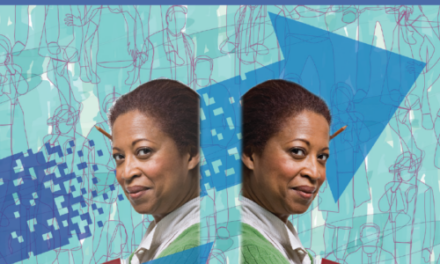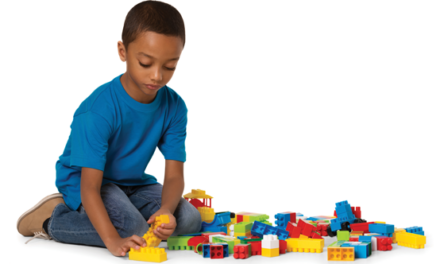A professor tells her preservice students to be aware that all their students have traveled different paths to the classroom and that getting students to understand their varying paths and those of each other is fundamental to learning.
Self-awareness, intellectual curiosity, and empathy, along with subject matter, are capacities that teachers should seek to imbue in their students. We start with three vignettes to highlight those needs.
CLAYTON
I was driving away from my last day of teaching at the New School of Arts and Sciences in the South Bronx area of New York City. I was leaving midyear because of my husband’s job transfer to California. Suddenly, a figure blocked my path, waving his arms. It was Clayton, a junior at the high school and one of my English students. When I rolled down the window, he came over to my side and plaintively asked me, “What do I do now, miss? How am I gonna make it if you leave?” Although I assured him that all would be well and that he was perfectly capable of making it without me, my eyes filled with tears as I drove down the Bronx Parkway. Clayton was one of those students who didn’t respond at first. He didn’t make any trouble, but he would come into class, put his head down on the desk, arms folded, and shut out all outside input. I didn’t catch his attention until I brought up Tupac Shakur as a noteworthy poet. When I explained that English class was the perfect place to learn how to write powerfully like Tupac, he was hooked. Schools around the world have many students like Clayton who are disengaged, disillusioned, or both — whose life circumstances and personal experiences, in and outside school, prevent them from actively engaging in learning.
RAUL
There are students like Raul, who came to school late every single morning, until I told him I was deeply disappointed in him. Crushed, Raul promised to be there on time from now on and, true to his word, began showing up at school even before the bell rang. When I smiled smugly at the end of the week and said, “See Raul, that wasn’t so hard now, was it?” Raul sighed. “No, miss, but it sure is expensive.” Little did I know that Raul’s mother was addicted to cocaine, and he needed to escort a little sister safely to school every morning and was now taking a taxi back across town just to make sure I wouldn’t be disappointed. It was my turn to be crushed.
CHELSEA
But make no mistake, not all my students were suffering from poverty. For example, when I taught in a beautiful, affluent, and well-funded school in Saratoga, Calif., I had a student, Chelsea, who was smart, raised by educated parents, but was more interested in partying, boys, and designer fashion than in academics. One day, we did a lesson on stereotypes. We talked about the different races and cultures in the Bay Area. As we talked about Mexican culture, Chelsea raised her hand. “The Mexicans like to party at Home Depot.” For a moment, I was mystified. Where had she gotten that idea? I asked her why she thought that. “Well, every day when I drive by, they have their music on in the parking lot, and they have food and everything under the trees.” In Chelsea’s life, music and food with a group meant parties. She had no inkling that these laborers stood in the hot sun all day hoping that customers going in and out of the parking lot would hire them to haul lumber, build fences, or plant trees. She didn’t realize listening to music as they ate their bag lunches under the meager shade of the trees was a form of relief from the constant stress of competing with each other to make a few dollars to send to distant families.
Critically illiterate
What do Clayton, Raul, and Chelsea — black, Hispanic, and white, respectively, and from widely disparate backgrounds and socioeconomic levels — have in common? They’re all equally unprepared for navigating the world. They are critically illiterate. Although they are inundated with messages from the world around them, bombarded with information, pressured by peers and pop culture, subjected to and often victimized by social media, they have no tools to figure out how to manage all of that information.
All three of them remind me of myself as an east Indian adolescent. Headstrong, rebellious, and privileged, I was married at a young age to an abusive man who tortured me for years before I mustered the courage to leave. Like Raul, I was burdened with suffering and responsibility too early in life. Like Clayton, I was desperate for guidance, and like Chelsea, I lived a life of blissful ignorance before my marriage. Surrounded by servants, I considered beggars on the street a nuisance rather than what they were: fellow human beings who were suffering. Lacking empathy, the ability to think critically, and the self-esteem sufficient to refuse mistreatment, I fell victim to the manipulations of my husband and in-laws. I often wonder how different my life would have been if I had been equipped at a young age with the tools to understand the world around me. My education ultimately gave me the courage to fight back. But, if I had received that education sooner, perhaps I would have been spared years of pain that could have been spent much more productively and joyfully.
Survival skills
Equip students with the skills to survive — a strong sense of identity, purpose, and relevance, the ability to think critically about information, and the confidence to fulfill their innate potential.
Now a professor at a California university, I spend my time emphasizing to preservice teachers the need to equip students not only with content knowledge, but with the skills to survive, including a strong sense of identity, purpose, and relevance, the ability to think critically about information, and the confidence to fulfill their innate potential.
I truly believe that educators are responsible for equipping young people with the life skills they need. There are several easy ways to do this that do not interfere with curriculum. These methods can be easily incorporated into the classroom; they demand more of a shift in thinking than of curriculum materials or additional resources. As a result, they can be implemented in every school district, from the most affluent to the most impoverished.
#1. Life map: Share the contours of your life with students and encourage them to develop their own life map.
On the very first day of class, I present an overview of my life up to that point, being sure to include significant ups and downs and challenges. I discuss my triumphs as a young girl who excelled in school and enjoyed my parents’ praise and support, and then how my parents punished me when my grades began failing and how they later discovered that I needed glasses. I talk about our journey to the United States and the torment my brothers and I faced as we tried to fit into a new culture and learn the proper accent. I mention my boy-crazed adolescence and how my grades once again began to dip as I obsessed over my appearance, about friends, and about attracting the opposite sex. I tell them about the dark years of my marriage and my life after divorce when I struggled to survive and to raise a young child while pursuing a Ph.D. I recount the adjustment I had to make to teach high school, my fear of teenagers and the many biases I held. I explain that every event of my life influenced my worldview, how I interacted with others, and whether I chose to learn.
Adolescents in the classroom easily identify with all these factors — needing approval, struggling with disabilities (poor vision in my case), adjusting to a new culture, dealing with abuse, overcoming challenges and biases. The universality of these issues allowed me, an Indian woman, to connect with students from very diverse backgrounds. When teachers use this approach, they invalidate the belief that teachers must be of the same culture as their students in order to teach them successfully.
Schools around the world have students who are disengaged, disillusioned, or both — whose life circumstances and personal experiences, in and outside school, prevent them from actively engaging in learning.
I tell preservice students that just as each of them has their own life map, each of their students will also have a life map. I urge them not to label students as failures merely because they didn’t do well in the previous grade or semester. Perhaps they are enduring a low on their life map and will come back up eventually. Perhaps they are dealing with a life issue that is affecting them deeply.
When teachers share their own life maps with the class, they model how to think critically about life events. The life map allows students to discuss their own lives with a critical eye. By analyzing what factors affected them most, they can understand the influences around them and how they react to them. In addition, life maps enable students to have voice in the classroom and allow teachers to acknowledge their often rich reserves of knowledge. Having students create their own life maps lays the groundwork for students to begin sharing what matters to them and, as a result, take the first steps to affirm or reaffirm their identity. A strong sense of identity is essential as young people set out on their journey through life.
#2. Questioning: Teach students the power of asking questions.
Teacher candidates need to learn that they should actively encourage, not just tolerate, student questions in their classrooms. I tell preservice teachers that when I was a high school teacher, I wrote this permanent reminder on the board: “Why are we doing this?” This was meant to remind students to challenge me on what I was teaching that day. Unless I could answer their question, I had no right to teach the material. While this may seem counterproductive and an invitation to rebellion and disorder, I tell preservice teachers that it actually makes their job easier. Imagine a classroom of bored and reluctant learners. While not all of them are disruptive, many are disengaged. A lifetime of being passive learners has taught them how to avoid what bores them. Often unable to see the relevance or use of what they’re learning, they simply shut down. When teachers encourage students to question the choice of lesson and the choice of material, students go from being passive to active learners. They’re forced to engage with the class. Once they receive a reasonable explanation for why they will personally benefit from learning the material, they’re more willing to do so.
This is by no means an easy task. Students are conditioned not to question. Even the most diligent among them only ask what’s needed to obtain an A. I personally spent a small fortune to bribe students with Jamba Juice to be the first to ask me, “why?” After much effort and many trips to the store, students finally learned that I valued having them challenge what was being taught and demanding answers for why they had to learn or do something. Their constant questions made me a better teacher because I had to think critically each day about what I was planning to teach and how students would benefit. Students also learned an essential life skill. Learning to ask “why” fostered in students a habit of not taking things at face value and of not meekly accepting what life or others handed them, but of stepping back and questioning whether it made sense for them.
#3. Empathy and tolerance: Nurture in young people empathy for their fellow human beings and tolerance for what is different.
Without an understanding of difference, whether in race, culture, customs, sexual preference, appearance, or socioeconomic status, students cannot learn or practice empathy. Just as I considered the beggars on the streets of India an eyesore and a nuisance, or Chelsea considered the Mexicans at Home Depot party animals, many students — rich and poor — are ignorant of the many forces that shape our position in society, and that all people are worthy and deserving of respect.
In order to help preservice teachers teach this important skill, I share a lesson I used with high school students. I ask students to define a stereotype, and I ask if the stereotypes are good or bad. Then, I ask them to describe a time when they were either subjected to or witnessed stereotyping. Students share their examples, and we then create a chart of categories such as gender, age, and religion, and brainstorm all the related stereotypes. Finally, we list different ethnicities, and students come up with positive and negative stereotypes for each. During this emotional process, members of each ethnicity passionately dispute the stereotypes about them, while continuing to engage in stereotypes against each other. By the end of the lesson, they realize how hurtful and limiting such stereotypes are and that they need to see beyond them to the individuals they encounter. It is a powerful and memorable lesson that allows students, often for the first time, to see the damage done by labeling, as well as the personal loss of potential friendships and relationships.
By the end of the stereotype lesson in Chelsea’s class, she realized what actually motivated the Mexicans in the parking lot, thanks to her classmates. She also learned that others held equally ignorant stereotypes about her race, her gender, and her attitudes.
Learning to empathize with and respect others is especially important for young people. The high school where I once taught Chelsea and her classmates was recently in the news after a young girl’s suicide due to her alleged rape and later sharing of pictures of the act on social media by some of the boys in her school. It is just one of the recent suicides occurring as a result of the violation of individual privacy and subsequent boasting on social media by adolescents. These tragedies, along with incidents of bullying and hate crimes, could possibly be averted if teachers take the time to actively teach empathy, respect, and tolerance in their classrooms.
Conclusion
The true purpose of education should be to help each student become functionally, academically, and critically literate so they can successfully navigate an increasingly complex world. Students will only be able to fully use the academic knowledge they gain in school if they have a firm grip on who they are, have a deeply ingrained habit of questioning and analyzing messages from peers, the media, and authority figures, and develop genuine compassion and respect for their fellow beings. Educators must focus on nurturing these traits in addition to imparting content knowledge so students are equipped to live freely, wisely, and without fear, and to develop their fullest potential.
Citation: Bathina, J. (2013). Before setting a course to learn, know thyself. Phi Delta Kappan, 95 (1), 43-47.
ABOUT THE AUTHOR

Jyothi Bathina
JYOTHI BATHINA is an associate professor of education, California State University, Fresno.












